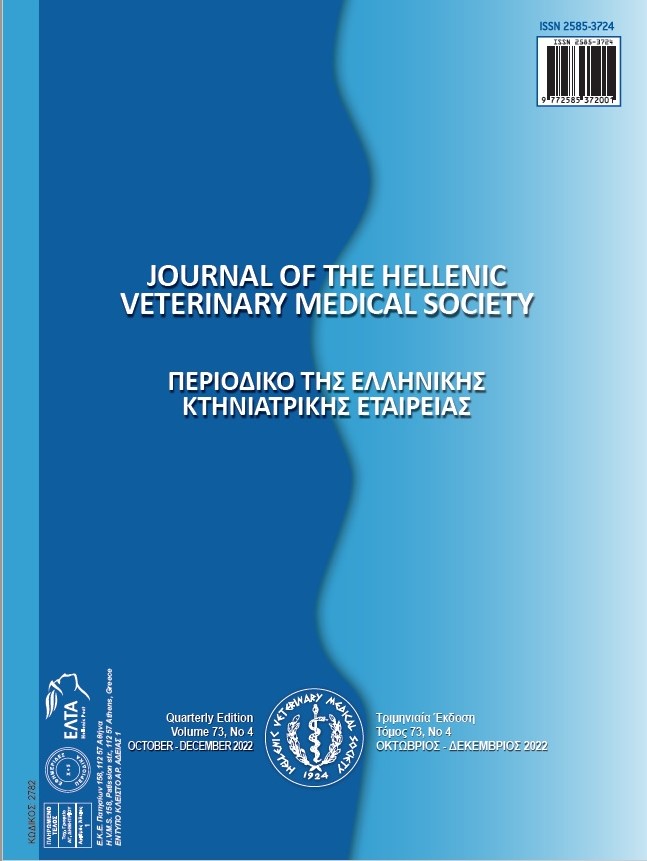Expression of steroidogenic enzymes in placentome of ewes with pregnancy toxemia after two parturition induction methods

Abstract
The regulation pattern of important enzymes in placental steroidogenesis and prostaglandins in ewes with pregnancy toxemia is reviewed. The alterations of gene expressions after the administration of aglepristone and dexamethasone are also discussed. Four healthy and 22 ewes with pregnancy toxemia were included to the study. Group AG (n=9) and Group DEX (n=9) in which ewes were injected twice with 10 mg/kg of aglepristone and once with 5 ml dexamethasone, respectively; whereas negative control [Group CG (n=4)] and pregnancy toxemia [Group PT (n=4)] groups received no treatment for parturition induction. Placentomes were collected either right after parturition or C-section. mRNA extraction from total placentome, caruncle, cotyledon and caruncle part of placentomes was carried out and Real-Time PCR was performed. Serum samples were collected and cortisol, PGFM, PGE2 and estrone sulfate concentrations were measured after treatments until parturition. The lowest mRNA expressions of steroidogenic enzymes were detected in group PT. Interestingly similar expression pattern of steroidogenic enzymes in group AG was as similar as group PT. No difference was found in expressions of 3βHSD and CYP19. PTGS2/COX2 and PGFS mRNA expressions were statistically different between groups AG-DEX and in caruncle between groups, respectively (P<0.005). Significant difference could clearly be observed in EP3 expression in caruncle of DEX and AG compared to CG (P<0.005); however PTGES, EP1, EP2 and EP4 expressions were not statistically different among groups (P>0,05). Ostrone sulfate, PGE2 and PGFM concentrations were statistically different according to the sampling time between groups however no difference was observed in cortisol. The present study has suggests that the endocrinologic pathway controlling parturition is clearly different in ewes with pregnancy toxemia. Spontaneous parturition could occur as a consequence of immune and inflammatory processes, which could be activated by by-products of fat metabolism. Dexamethasone applications has mimicked normal parturition, however the gene expression regulations, controlling uterine contractions, are observed as similar as group PT. Probably expressions of EP1 and tissue-specific counter-expressions of cervical EP genes could refer the pathogenesis of insufficient cervical dilatation, observed in pregnancy toxemia and dexamethsone applications.
Article Details
- How to Cite
-
Özalp, G., Ortaç , C., Bozkurt, B., Rişvanlı, A., Aktar , A., Yavuz, A., Korlu, Y., & Şeker, İ. (2023). Expression of steroidogenic enzymes in placentome of ewes with pregnancy toxemia after two parturition induction methods. Journal of the Hellenic Veterinary Medical Society, 74(2), 5505–5516. https://doi.org/10.12681/jhvms.26611
- Issue
- Vol. 74 No. 2 (2023)
- Section
- Research Articles

This work is licensed under a Creative Commons Attribution-NonCommercial 4.0 International License.
Authors who publish with this journal agree to the following terms:
· Authors retain copyright and grant the journal right of first publication with the work simultaneously licensed under a Creative Commons Attribution Non-Commercial License that allows others to share the work with an acknowledgement of the work's authorship and initial publication in this journal.
· Authors are able to enter into separate, additional contractual arrangements for the non-exclusive distribution of the journal's published version of the work (e.g. post it to an institutional repository or publish it in a book), with an acknowledgement of its initial publication in this journal.
· Authors are permitted and encouraged to post their work online (preferably in institutional repositories or on their website) prior to and during the submission process, as it can lead to productive exchanges, as well as earlier and greater citation of published work.








